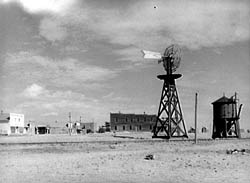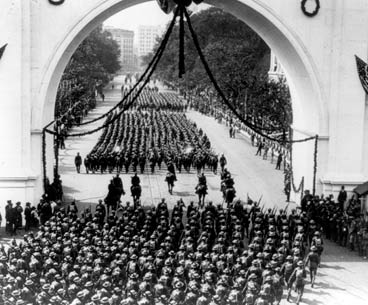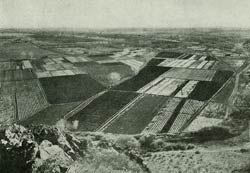Americans aren’t always aware of the debt they owe military veterans, but they’ll usually be reminded of the subject on Veterans Day. The treatment of veterans also gets re-examined at the end of every war, when the country considers what will happen to all its returning veterans. By the time this year ends, all American soldiers in Iraq will have returned home after an eight-year war. Hundreds of thousands of American veterans will be eligible for a variety of benefits from the Veterans Administration, such as medical care, job training, housing support, and education funding for vets and their families.
We’ve come a long way in the past century, when the government discharged veterans with little help to resume their lives and careers, and Americans viewed their return as a challenge to their standard of living. As a Post editorial observed,
In time, millions of Americans will be released from military service and return to civil life… [already] war’s enormous demands upon industry are diminishing or have ceased.
A good many people are disturbed over that prospect.
Various expedients have been suggested—some of them admirable, such as reclaiming more land for agriculture by irrigation, drainage, and so on. [“Demobilizing” Nov. 30, 1918]
The expedient to which they referred was the land-reclamation project launched by Franklin K. Lane, the Secretary of the Interior. The Post offered Lane’s own explanation of the project:
“These boys will come back. How are we to meet them? They will be proud; they will have seen the world as we have never been able to see it; they will have a spirit that we will envy and a comradeship that we can never have.We do not want to give them charity. We could not if we wanted to.
“[However] we have approximately from 200 million to 250 million acres of land at present unused which can be made as productive as any agricultural land in the world.
“It is an easy thing to do. The land is there; and we should say to the boys… ‘Here is a job at your hand; current wages, four dollars a day, if you please. Go; build dams on the Colorado Rivera. Go; redeem swamps in Southern Maryland. Go; clear the lands in Northern Michigan.” [“When the Boys Get Back From France,” Nov. 30, 1918]
The ultimate goal was to create new farm land in the western states, which veterans could buy with a 10% down payment.
“[The veteran-farmer] will add to the wealth of the nation; but he will add far more than the physical wealth—he will add a richness of life and independence of spirit, and have in his heart always gladness, because he…found on his return that he had come back to a republic that was not ungrateful.
“The opportunity is…to bring the land and the soldier together, to provide work and homes for hundreds of thousands of American citizens, to furnish a supply of foodstuffs sufficient for our growing population.”
It was an admirable idea to many, but Emerson Hough, the Post’s “Out-Of-Doors” columnist, saw it as a threat to the wilderness.
Secretary Lane’s reclamation idea is born out of this war. It surely will tend to kill American outdoor sports.
The interior Department has taken stock of every acre of wild land in America—marsh, forest, desert or foothill. Millions of acres of unused lands have been discovered which are now to be utilized—
Surely this means that the last of the American wild places are to be used as soon as possible. The last resort of wild game—the last home of the last bird and beast—is to be cleared, drained, plowed and planted. Enter industry; exit game; exit sport. Enter a new country and new philosophy of all work and no play—unless that shall be play in some rich man’s yard.
It [could mean] the growth of the law of trespass; a future of less and less open sport in America.[“Sport After the War,” March 1, 1918]
Both Lane and Hough were wrong.
The wilderness did not disappear. The hydroelectric projects did not destroy the beauty of places like

Jackson Lake in Jackson Hole, as Hough declared they would. Even more land was set aside for national parks, making the wilderness open to more Americans.
Lane’s hope for a new generation of veteran-farmers never materialized either. When the Federal government stopped buying food for the war effort, farmers had surplus crops at the 1918 and 1919 harvest. Prices dropped. Farms failed. New farms made in the high plains of the Dakotas, Montana, and Colorado quickly depleted the soil, adding to the number of farm failures. In 1920, for the first time, more Americans lived in towns and cities than farms.
Instead of choosing careers for veterans, today’s GI benefits help veterans pursue their own futures. And have proven a much wiser investment.
Become a Saturday Evening Post member and enjoy unlimited access. Subscribe now





Comments
Wow…I am glad it did not work. After what people did to cause the Dust Bowl…imagine that even bigger!
This is very very interesting. I’m going to check this out, it could have been partly the cause of the great depression of 1930s which I grew up in. There was a big
exit from the Farms to the cities. Lot of it was cause of lack of water & buyers for produce.